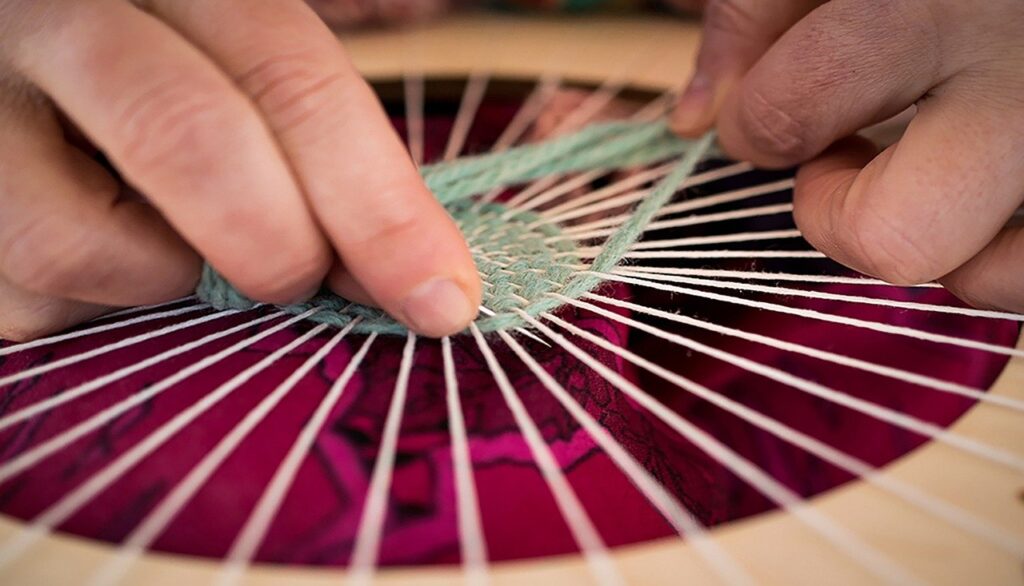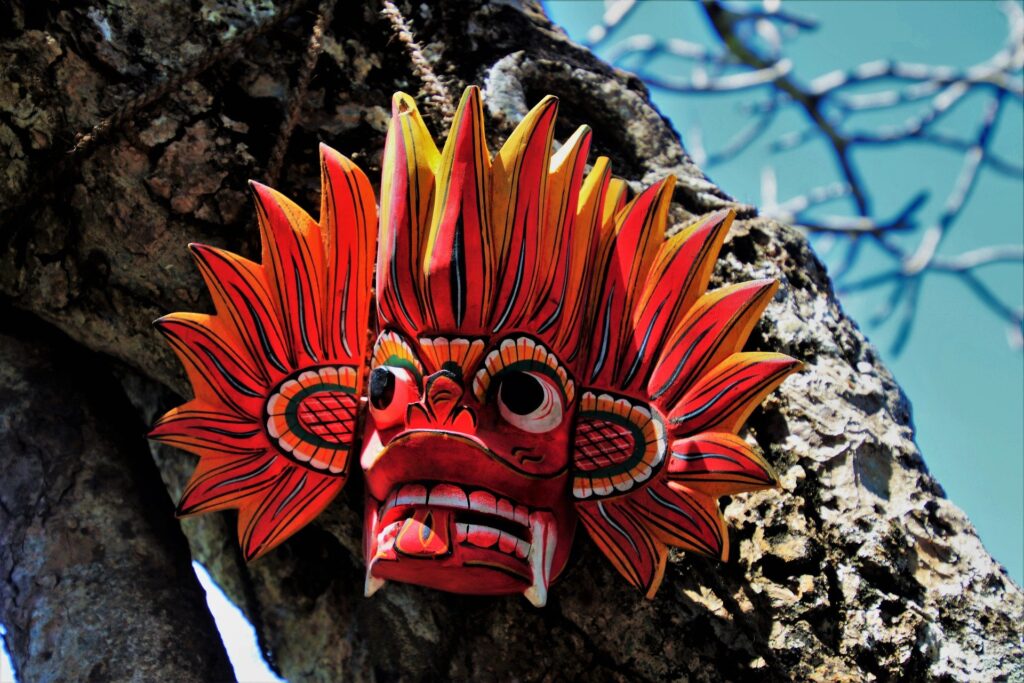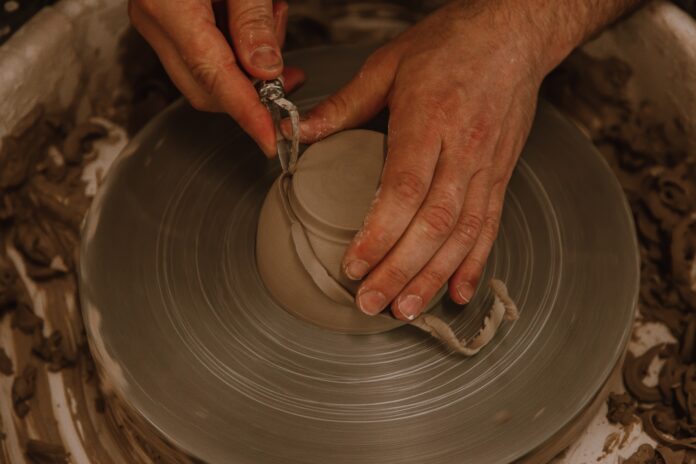Preserving Tradition and Supporting Local Artisans
Are you fascinated by the intricate designs and vibrant colors of handmade crafts? Do you appreciate the skill and creativity that goes into each piece of art? If so, then you’ll be delighted to learn about Sri Lanka’s thriving handicrafts industry. From exquisite textiles to intricate woodcarvings, Sri Lanka’s artisans produce an array of unique and beautiful handicrafts that are renowned around the world.
The History and Evolution of Handicrafts in Sri Lanka
Sri Lanka has a rich history of handicrafts that dates back centuries. Traditional crafts such as pottery, weaving, and woodcarving were once essential for daily life, providing people with tools, clothing, and other necessities. Over time, these crafts evolved into works of art, incorporating intricate designs and vibrant colors that reflected the island’s diverse cultures and traditions.
Today, Sri Lanka’s handicrafts industry continues to thrive, with artisans producing a range of high-quality products for both local and international markets. Many of these artisans come from families with a long tradition of crafting, passing down their skills and techniques from generation to generation
The Diversity of Sri Lanka’s Handicrafts
Sri Lanka’s handicrafts industry is incredibly diverse, with artisans specializing in a range of different crafts. Here are just a few examples:
Textiles

Sri Lanka is renowned for its exquisite textiles, which are made using traditional weaving techniques. These textiles feature intricate designs and vibrant colors and are used to create everything from clothing to home decor items.
Woodcarving
Sri Lanka’s woodcarvers are masters at transforming blocks of wood into intricate works of art. They use a range of tools and techniques to create everything from delicate figurines to elaborate furniture pieces.
Pottery and ceramics
Sri Lanka’s potters produce a range of beautiful clayware, including bowls, plates, and vases. They use traditional techniques to create unique shapes and designs, often incorporating local motifs and symbols.
Another prominent aspect of Sri Lanka’s handicrafts industry is its pottery and ceramics. Sri Lanka has a rich history of pottery-making, with evidence of pottery production dating back over 2500 years.
The pottery and ceramics industry in Sri Lanka produces a wide range of products, from traditional clay pots and dishes to modern decorative pieces. The clay used for making these products is sourced from various regions in Sri Lanka and is known for its quality and durability
The process of making pottery and ceramics in Sri Lanka involves several stages, including molding, firing, and glazing. The products are shaped by hand or with a pottery wheel, and then fired in a kiln at high temperatures to strengthen them. The glazing process involves applying a layer of enamel or paint to the surface of the product to make it more durable and aesthetically pleasing.
Pottery and ceramics have played an essential role in Sri Lankan culture for centuries. They have been used for a variety of purposes, such as storing food and water, cooking, and serving food. They have also been used in religious and cultural ceremonies, such as the offering of alms to Buddhist monks.
Pottery and ceramics in Sri Lanka are also admired for their beauty and craftsmanship. Many traditional designs and patterns are still used today, reflecting the rich cultural heritage of the country. The pottery and ceramics industry has also evolved to include more modern designs and decorative pieces, appealing to both locals and tourists alike.
Jewelry
Sri Lanka’s jewelers are known for their exquisite craftsmanship, producing intricate pieces that incorporate precious metals and gemstones. Many of these pieces feature traditional designs and are often passed down through families as heirlooms.
Wooden Masks

One of the most fascinating aspects of Sri Lanka’s handicrafts industry is its wooden masks. These masks are a traditional art form that has been practiced for centuries and are unique to Sri Lanka.
Wooden masks are used in many cultural and religious ceremonies in Sri Lanka, such as traditional dances, dramas, and rituals. They are also used in healing rituals to ward off evil spirits and to treat various ailments.
The wooden masks are carved by skilled artisans using traditional tools and techniques. The wood used is usually light-weight and durable, such as balsa or kaduru wood. The masks are painted with bright colors and intricate designs, which vary depending on the purpose of the mask.
In addition to their cultural significance, wooden masks have also become popular souvenirs for tourists visiting Sri Lanka. Many tourists are drawn to the unique designs and vibrant colors of the masks, and they make for a beautiful addition to any home decor.
Wooden masks hold a significant place in Sri Lankan culture and tradition. They are believed to have originated from the exorcism rituals performed by indigenous people to ward off evil spirits. Over time, the masks became an integral part of Sri Lankan culture and were used in many religious and cultural ceremonies.
The designs and patterns on the masks hold symbolic meanings and are often inspired by animals, demons, and deities from Sri Lankan mythology. The colors used on the masks also hold significance, with each color representing different emotions, personalities, or deities.
Today, wooden masks continue to be used in many cultural and religious ceremonies in Sri Lanka, such as the annual Kandy Esala Perahera festival. They are also collected by art enthusiasts and tourists alike, who appreciate their unique beauty and cultural significance.
The Importance of Supporting Sri Lanka’s Handicrafts Industry
By supporting Sri Lanka’s handicrafts industry, you are not only acquiring unique and beautiful products but also supporting local artisans and preserving traditional crafts. Many of these artisans come from rural areas and rely on their craft to make a living. By purchasing their products, you are helping to support their families and communities.
The Challenges and Opportunities for Sri Lanka’s Handicrafts Industry
While Sri Lanka’s handicrafts industry is thriving, it still faces several challenges. One of the biggest challenges is the competition from cheap, mass-produced imports from other countries. These imports can be sold at much lower prices, making it difficult for local artisans to compete.
Another challenge is the lack of access to modern technology and training. Many artisans still use traditional techniques, which can be time-consuming and inefficient. By adopting modern technology and techniques, they could increase their productivity and improve the quality of their products.
However, there are also opportunities for the industry to grow and prosper. With the increasing demand for handmade, eco-friendly, and sustainable products, Sri Lanka’s handicrafts industry is well-positioned to meet this demand. By promoting their unique cultural heritage and traditional techniques, Sri Lankan artisans can differentiate themselves from mass-produced products and appeal to conscious consumers.
The Future of Sri Lanka’s Handicrafts Industry
The future of Sri Lanka’s handicrafts industry is promising, but it will require continued support and investment. By promoting their products through tourism and online platforms, local artisans can reach a wider audience and increase their sales. The government and private sector can also provide support through training programs, access to finance, and infrastructure development.
With the right support, Sri Lanka’s handicrafts industry can continue to thrive and contribute to the country’s economic and cultural development. It can also provide a source of pride and identity for Sri Lankans and help to preserve their traditional crafts for generations to come.
Conclusion
Sri Lanka’s handicrafts industry is a rich and diverse sector that represents the country’s unique cultural heritage and artistic traditions. From the intricate wooden masks to the beautiful pottery and ceramics, each craft holds significant cultural and religious significance and reflects the creativity and craftsmanship of Sri Lankan artisans.
The industry has also evolved to include more modern designs and products, appealing to a broader range of customers and contributing to the country’s economic growth and development. As such, it is crucial to support and promote Sri Lanka’s handicrafts industry, both to preserve the country’s cultural heritage and to support local artisans and sustainable development.
So why not explore Sri Lanka’s handicrafts today and discover the beauty and creativity that lies within? Whether you’re looking for traditional souvenirs or modern decorative pieces, there is something for everyone in Sri Lanka’s vibrant handicrafts industry.
FAQ
What are some popular handicrafts in Sri Lanka?
Some popular handicrafts in Sri Lanka include textiles, woodcarving, pottery, and jewelry.
Where can I buy Sri Lankan handicrafts?
Sri Lankan handicrafts can be purchased at local markets, handicraft shops, and online retailers.
How can I support Sri Lanka’s handicrafts industry?
You can support Sri Lanka’s handicrafts industry by purchasing products from local artisans, sharing information about their work on social media, and advocating for fair trade policies that support artisanal communities.
